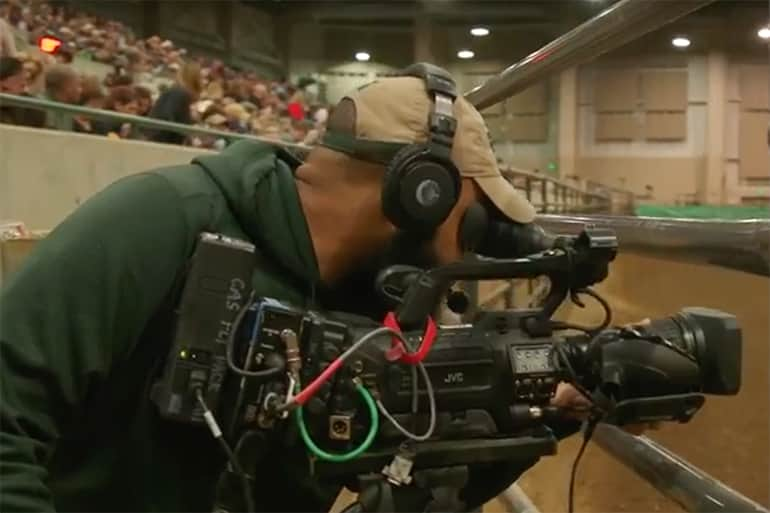One class project for juniors and seniors studying media and information required them to get a little rowdy during the weekend of Feb. 17. Students in MI 491: “Live Event Production for Broadcast" grabbed their camera gear and equipment and headed to the 48th annual “Spartan Stampede," a professional rodeo hosted by the MSU Rodeo Club that features national champions.
[embed]https://youtu.be/maWzdKb8s-Y[/embed]
Coverage intensifies with addition of new technology
Coverage of Spartan Stampede began in 2014 by a student completing an independent study with Brian Kusch, a broadcast and systems information engineer and instructor. Interest in the topic grew into a full class, which now covers not only the rodeo, but also Big Ten sporting events and award ceremonies like the Albies - an award show for film and media students at the College of Communication Arts and Sciences.
Now in its fourth year, students in the class are able to enhance their work with new technology, including live streaming and instant replay capabilities.
“It's something small that an audience finds typical in sports broadcast in this day and age, but very few students get their hands on that tech in a classroom setting," said Zach Hall, the instructor for the course. “Every year is another step in the right direction, whether large like live streaming or small like a replay system. I'm extremely pleased to say that this was the best Spartan Stampede we've covered so far."
Executing the plans and getting the shots
Students worked behind the scenes during the time leading up to the event, ensuring the live show was filmed and broadcast without any major issues.
“Covering Spartan Stampede is an adventure in itself. The experience involves an entire weekend of setup, testing and practice spanning over three days," said Hall. “Our live broadcast was of the 8 p.m. Saturday night show of the Spartan Stampede, but we also utilize the earlier shows for practice."
For media and information junior Robert Krohn, the class taught him many lessons he believes will be valuable for achieving his future goals of working in live sports production.
“My favorite moment, personally, was seeing the final product come together," said Krohn. “I think anyone that gets into this business learns to appreciate the time and effort that you put into a broadcast of this scale, and it was just nice to watch as everyone got into their roles and see the show come together after three long days of setup."
Collaboration across college contributes to experience
The coverage of Spartan Stampede was a cross-college project as students from two other ComArtSci classes were recruited to assist. Troy Hale’s advanced video editing students were asked to create intros and video bumpers for the live production. The student with the best video open had their intro used in the live broadcast, and another student was asked to be the editor and to work further with Hall’s class. Jon Whiting’s audio class was also involved and provided MI 491’s crew with a sound editor.
Hall revealed one of the most satisfying aspects of the class as an instructor is being able to offer young, growing professionals the opportunity of experiential learning – something the faculty and staff at the College of ComArtSci takes pride in.
“The best part is observing how these students work with each other in the control room and out on cameras," said Hall. “I could speak on this all day in a classroom, but the best way to teach this balance is to work it, and practice in real life situations. When the broadcast is done, that's why my students clapped and cheered when (the live event) dissolved to black to end the show. They had done it, and done it well.”
